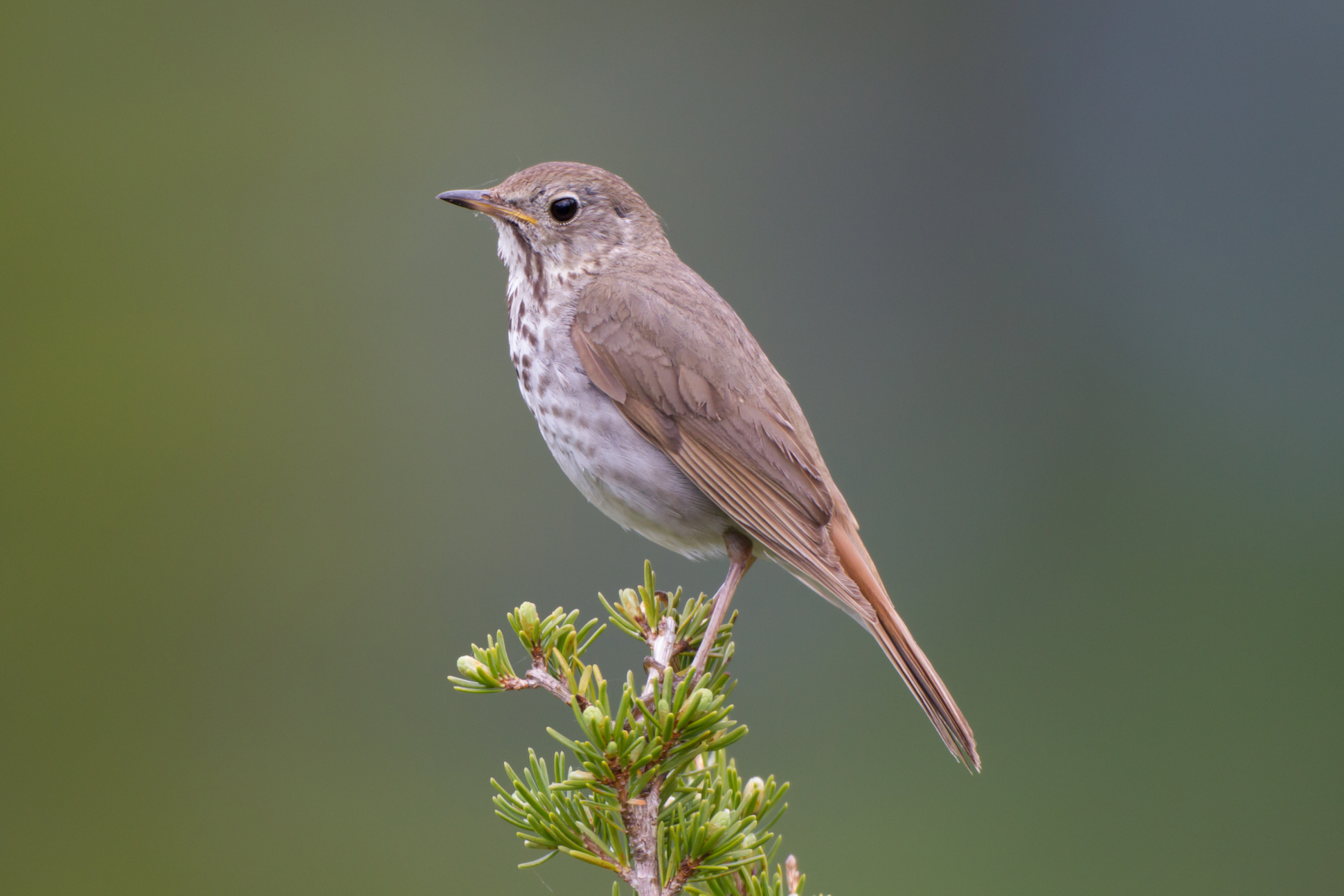
The Hermit Thrush songbird’s tune varies with geography
The Hermit Thrush songbird produces different sounds based on geography, with differences that can be traced back to the bird’s evolutionary past, a new study found.
The sounds vary across the large portion of North America where it spends the summer, according to the study by researchers from Nova Scotia’s Dalhousie University. The team studied 100 recordings captured between 1951 and 2015.
“Though Hermit Thrushes have a beautiful, well-known song, relatively little is known about their singing behavior,” says one the authors, Sean Roach.
The analysis revealed significant differences in song structure across the three major populations–Northern, Western Mountain, and Western Lowland–as well as within them.
The introductory notes that preface the bird’s songs showed the most striking differences. The Western Lowland Thrush produces higher, more variable introductory notes than their relatives elsewhere, the study said.
Some of the variation likely dates back to isolation of different Hermit Thrushes populations by ice sheets during the Pleistocene era. Differences between the two western groups may relate to body size, with larger birds producing lower-frequency songs.
One group of birds in the Canadian Rockies sang songs that stood out from other members of their subspecies, which Roach and coauthor Leslie Phillmore believe is an adaptation to how sound carries in their open, shrubby habitat.
“The whistle note’s relative consistency across large geographical distances may be due to its role in long-distance communication of species or subspecies identity, while the remainder of the song could be under fewer constraints and its variability may carry more information about individual singers,” said Heather Williams of Williams College, an expert on song diversity who was not involved in the study.
The research was published in the journal The Auk: Ornithological Advances
—
By: David Beasley, Earth.com Staff Writer
Source: American Ornithological Society













